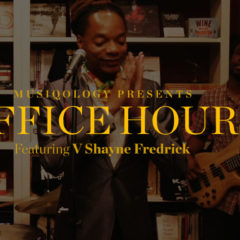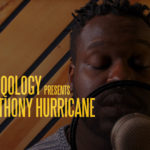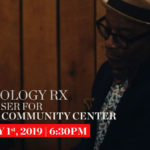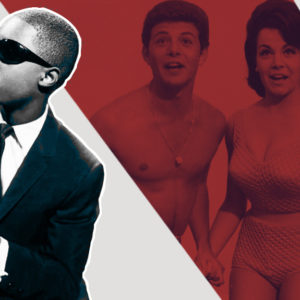When the curtain rises and Dr. Guy and the cast of Hide/Melt/Ghost assemble at Harlem Stage this upcoming Saturday, March 9, it will be the realization of a set of journeys for the good doctor and the MusiQology project—from conception to completion, from Philly to Harlem, from word to sound, from past to present, and from the stage to the classroom and back again.
The journey begins more than 400 years ago, a ghastly anniversary marking when black slaves set foot on America’s shores, ripped from their families, cultures, and contexts. Hide/Melt/Ghost begins there, too, on the plantation and in the field, in the muck and strangeness of slavery’s plunder of African cultures, into which stepped music to fill the void. The lines of time and space blur as the multi-media rendering of the earliest histories of black people in America elaborates the role of music as secretive, treasured space, where, in Ramsey’s words, “musical practices that enslaved people made were hiding places…places where they could tuck away their secret desires for freedom, justice, liberty…everything that the democracy they were living in promised but was not open to them.”
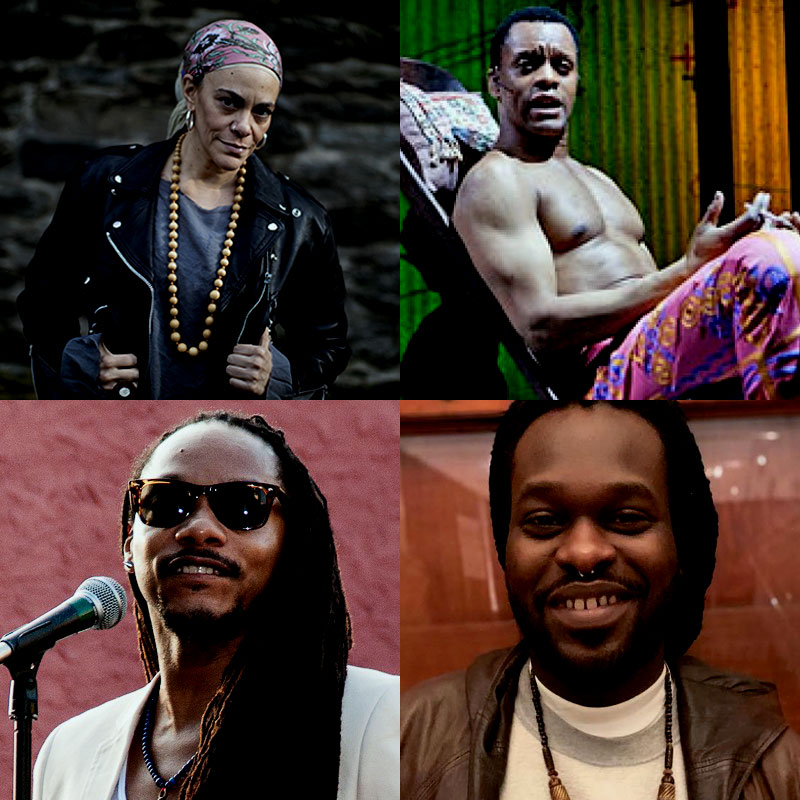
The staging features a cast of performers including Emmy winner Kevin Mambo of Fela! fame, poetess extraordinaire Ursula Rucker, and members of Alvin Ailey American Dance Theater alongside instrumentalists Sadayah Roberts, David Hackley Jr., and Mollie Ducoste. Multi-talented singer V. Shayne Frederick and MusiQ Department artists Bridget Ramsey and Vince Anthony sing the beautiful, haunting refrains. Performances mix genres, incorporating spoken-word, poetry, classical and folk genres, with well-known songs such as “Wade in the Water” given new life by arrangements both of the moment but indebted to the past.
In this way, song serves to collapse context, an auditory time machine where the compositions—illustratively rich and sonorously striking—live long after those who sang them have transitioned. It’s a fitting metaphor for the permanence of atmospheric anti-blackness that pervades the American project, even as boundaries break and divisions fall. “I have to stay in that moment, because it did happen. It did happen this way. This thing happened this violently. That thing did happen this starkly. The songs are reminders that ‘that thing,’ whatever it is in its context,’ will never stop happening,” Vince Anthony tells me, reflecting on performing the work. “I think maybe I feel when I’m doing the embodied part of the performance, that I’m carrying all of that from back then and all of the stuff that’s happening now, too. And that the weight of that makes me feel really uneasy in the most artistic and generative way.”
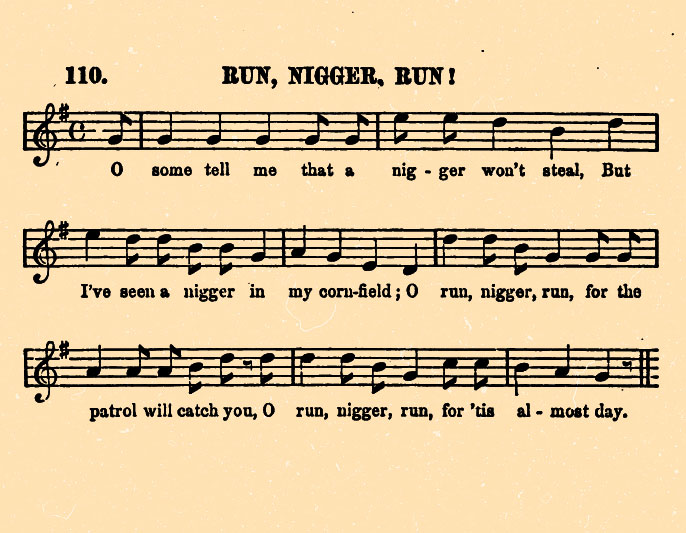
That “embodied part” places the viewer and the singer in the hot, languorous field, the yawning, dreadful slave ship, and the mystical religiosity of the spiritual in ceremonial performance. It’s an almost indescribable feeling, to sit in 2019 and to consume the admixture of casual performance and deep ambivalence with which Anthony, Frederick, and the cast deliver a tune like “Run Nigger Run,” a nineteenth-century folk song that discussed the plight of runaway slaves from the patty-roll slave patrols. It’s artful horror, a light and buoyant rendering of the quotidian darkness of existence and the way music made the terror of the day-to-day less omnipresent and weighty. This tension—that these pieces were created or inspired by enslaved Africans and their descendants—is the striking provocation of the Hide/Melt/Ghost project, which has been workshopped at universities throughout the nation over the last year in preparation for this theatrical rendering.
“That’s the thing that I try to do,” Ramsey says in describing the machinations of the performance. “It lulls people into a sense of ease, because you’re listening to a beautiful voice or lush chords, and you automatically get into a kind of mindset about those things. And then there’ll be this message that runs through the piece that creates this tension between what you desire and what you’re actually getting.”
Read a Q&A with Dr. Guy on an earlier version of Hide/Melt/Ghost.
Ramsey connects Hide/Melt/Ghost’s explorations in (dis)comfort with a broader artistic genealogy, citing Hank Willis Thomas’s “Branded” series and Kara Walker’s powerful silhouettes as ways the art world can provoke. Music, he says, tends to occupy a more comfortable space that the work challenges. “People are used to music being fit into the ‘beautiful’ category,” he remarks. “And while these songs are rich and textured and beautiful, this is an attempt to connect to a long history of people disrupting that notion, and challenging people’s notions of beauty, and even people’s notions of art. What does it mean to make art?”
That question takes on a new meaning when considering music-making from the earliest days of slavery on the American continent through the mid-nineteenth century, the period of history covered by Hide/Melt/Ghost. Interspersed between the musical numbers are surrealist videos by the filmmaker William Wolf and recitative readings by Ramsey, drawn from the book project Soundproof: Black Music, Magic and Racial Intimacies that helped birth the Hide/Melt/Ghost triptych. These readings lend context to the musics for those unfamiliar, but they serve a greater purpose: working to blur the lines between the written and the sonic. “The music that we play is based on dynamic performances of historical text,” Ramsey says definitively, adding a joking rejoinder, “If you stand up in front of people and read a book, it damn well better be listenable. You can’t have the language of music that’s going out and the language of speaking, the narration, be miles apart. You have to really kind of resonate with one another. And both of them have to be, in my view, conversational.”
Soundproof is an ambitious project in the lineage of the great writers of music historians—Eileen Southern, Amiri Baraka, Sam Floyd, Portia Maultsby—and the performance helps navigate the scope, playing the history in addition to writing it. “I always tried to integrate performing in my pedagogy, but because of the discipline, I actually saw them as two distinct practices that I was doing. But more of late, and through a lot of hard work, and thinking about how they fit together, I see them as one thing now. Or I see what I’m doing as a way to combine research and writing, teaching and performing. So, I look at it as a triangulation.”
This is the broader intervention of the Hide/Melt/Ghost project and Ramsey’s contribution to the discipline’s future: It gives permission (and does not ask it) to link performance practice with the academy. As such, it’s a response to the age-old questions that vex so many music scholars: How do we create public scholarship that can reach beyond the classroom? How do we reconcile teaching, scholarship, and performance?
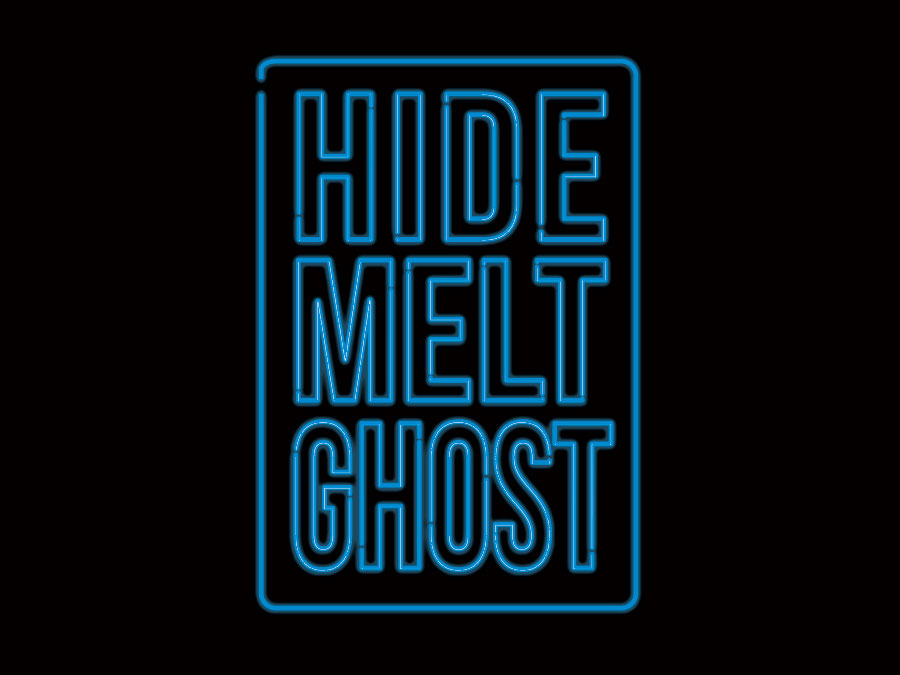
Hide/Melt/Ghost is all three-in-one, a multi-modal, multi-media project that forges new ground for scholarly and teaching activity that powerfully and importantly foregrounds the affective experience of the music itself. “I look at this and our ongoing concert series at Saint Paul’s as being a teaching tools without coming across as preachy,” Ramsey explains. “You actually show people how things can be mashed up, and how the idea of the esprit-de-corps or ‘spirit’ of secular music-making, and the spirit that comes from worship and praise and doctrine are two things that can be compatible.”
Read about the Saint Paul’s performance and other recent MusiQology gigs.
This is how a deeply researched musical history of black America might be most appropriately rendered—as sound and word and scene and act. As Ramsey continues to write Soundproof, he envisions more mixed-medium pieces in the vein of Hide/Melt/Ghost, a culmination and resolution of scholarly and personal practice finally intertwined at Harlem Stage.
Hide/Melt/Ghost is an artist and a scholar reconciling those two identities in performance, speaking in multiple registers at once and traveling across time and place, transporting the audience and “You want to you want to fulfill some expectations but at the same time reset people’s ideas of what’s possible from a constellation of forces—history, scholarship, music, art,” Ramsey suggests. “The more you do that, the stronger the impact will be.”
Hide/Melt/Ghost will take place on Saturday, March 9, 2019, at Harlem Stage, 150 Convent Avenue, New York, NY. It begins at 7:30PM and runs until 9:30PM. Tickets cost $25 and can be purchased at the door or on the Harlem Stage website.

 Share On Facebook
Share On Facebook Tweet It
Tweet It


